#manual focus lenses
Text
Cosina's Voigtländer Manual Prime Lenses for Fujifilm X-Mount Cameras Are Getting More Interesting With Two More Coming Soon, 27mm f/2.0 & 35mm f/0.9

View On WordPress
#Cosina#Cosina Voigtländer Nokton 23mm f/1.2 Aspheric for Fujifilm X Mount#Cosina Voigtländer Nokton 35mm f/0.9 Aspheric X for Fujifilm X Mount#Cosina Voigtländer Nokton 35mm f/1.2 X for Fujifilm X Mount#Cosina Voigtländer Ultron 27mm f/2.0 for Fujifilm X Mount#Fujifilm#Fujifilm X-Pro2#Fujifilm X-Pro3#Fujinon XF 27mm f/2.8#Fujinon XF 27mm f/2.8 R WR#manual focus#manual focus lenses#pancake lenses#Voigtländer
0 notes
Text
Voigtlander Nokton 21mm f1.4 Lens Review: Such Beautiful Colors!
You're going to love the colors here!
When given a choice, I will always choose manual focus lenses. I learned photography with a Hasselblad 501cm, an analog camera that provided more opportunities to bond with photography because I had to do everything. Sure, autofocus is excellent and convenient, but it offers less satisfaction. The Voigtlander Nokton 21mm f1.4 lens for Sony E Mount provides a great compromise.
(more…)

View On WordPress
#Manual Focus#manual focus lenses#photojournalism#portraits#Sony E#sony e mount#sony emount lenses#street photography#voigtlander#Voigtlander Nokton 21mm f1.4
0 notes
Text

Baby
Sony a7rii, Nikon AF Nikkor 70-210mm 1.4 to 5.6 D
photo: T. Hall
#whatlightdoes#mine#my photography#sony a7rii#photography#cat photos#cat photography#Nikon AF Nikkor 70-210mm 1.4 to 5.6 D#manual focus#old lenses#old glass
21 notes
·
View notes
Text
Focusing the Lens: A Journey through Technological Evolution
Throughout the history of photography, the lens has played a pivotal role in capturing moments and creating art. From the humble beginnings of manual focus lenses to the revolutionary advent of autofocus technology, the evolution of lens technology has been nothing short of remarkable. As a seasoned lens manufacturer with 40 years of experience, we have had a front-row seat to this transformative journey. In this in-depth article, we will embark on a captivating exploration of the fascinating progression of lens technology and its profound impact on the world of security.
The Birth of Manual Focus:
In the early days of photography, lenses were simple and rudimentary, requiring photographers to engage in the delicate art of manual focus. These early lenses were solely designed for photography, and their operation necessitated the photographer's hands-on involvement. Adjusting the focus ring was the primary means of achieving sharpness, a process that demanded skill, precision, and patience.
These early lenses, while limited in their application to photography, laid the crucial groundwork for the evolution of lens technology. The concepts and mechanisms developed during this era set the stage for what was to come. Fast forward to today, and we find that manual focus lenses have come a long way. Modern iterations of manual focus lenses have evolved into sophisticated tools, finding applications in diverse fields such as robotics, machine vision, inspection, and laboratory work.
These lenses have grown into versatile instruments, offering enhanced precision and control to meet the demands of an ever-evolving world. They continue to play a crucial role in various industries, even in the age of autofocus, where their unique attributes are prized for specific applications.
The Advent of Autofocus:
The lens technology landscape changed drastically with the introduction of autofocus. This monumental leap brought about a revolution in the capabilities of the security industry and photography as a whole. Autofocus systems employ a combination of mechanical, optical, and electronic components to automatically adjust the lens focus, eliminating the need for manual intervention. The result is quicker and more accurate focusing, ensuring optimal image quality and placement.
Suddenly, organizations across the spectrum could enhance their security measures. With autofocus lenses, they could secure all corners of their properties, both from various heights and angles. This transformation brought about a new era of convenience and efficiency in security and surveillance.
The integration of autofocus technology into photography also opened doors for creative exploration, enabling photographers to concentrate on composition and subject interaction without the distraction of manual focus adjustments. The significance of this development in the evolution of lens technology cannot be overstated.
Phase Detection vs. Contrast Detection Autofocus:
The world of autofocus is not monolithic; it is divided into two primary categories: phase detection autofocus (PDAF) and contrast detection autofocus (CDAF). These systems employ different techniques to achieve the common goal of precise focusing, and each has its own strengths and applications.
PDAF relies on a dedicated sensor to measure the phase difference between light rays, resulting in rapid and accurate focusing. This technology has found its place in scenarios where speed and precision are paramount. For security systems that need to respond swiftly to changes in the environment, PDAF is a valuable asset.
On the other hand, CDAF takes a different approach by analyzing the contrast levels within the image to achieve focus. While it may not be as quick as PDAF, CDAF excels in situations where a slower and more deliberate focus adjustment is acceptable. The choice between these autofocus methods depends on the specific requirements of the application, and both have their roles in the evolving landscape of lens technology.
Continuous Autofocus and Tracking:
As lens technology continued to advance, it gave birth to the concept of continuous autofocus (AF-C). This feature enables a lens to continuously adjust focus as the subject moves, making it invaluable for capturing dynamic and fast-paced scenes. Whether in a sprawling sports complex or a bustling college campus, AF-C technology ensures that critical moments are captured with precision.
The evolution of AF-C has seen it become increasingly accurate and responsive. Today, it is a vital tool for numerous applications beyond sports and events. In the realm of security, where monitoring and tracking are of utmost importance, this technology enhances the capability to monitor and respond to changing conditions in real-time.
Silent and Ultra-Fast Autofocus Motors:
In addition to advancements in autofocus methods, lens manufacturers have made significant strides in the development of silent and ultra-fast autofocus motors. These cutting-edge motors have redefined the user experience by ensuring near-silent operation and rapid focusing. Gone are the days of noisy, distracting autofocus mechanisms that could disrupt a quiet environment.
This development is particularly beneficial in scenarios where discretion is essential. For instance, in environments like busy warehouses with conveyor belts, the ability to focus quickly and quietly can make a significant difference in capturing critical moments without disturbance. The reduction of lag between pressing the shutter button and image capture enhances efficiency and overall image quality.
The Impact on Security:
The evolution of lens technology from manual focus to autofocus has had a profound impact on security. The ability to secure properties from various angles and heights with speed and precision has transformed how we monitor and protect our environments. Whether in the context of large-scale security systems or in more specialized applications, lens technology has played a pivotal role in ensuring the safety of our cities and communities.
In large sports complexes, college campuses, transportation hubs, and public spaces, autofocus technology has become an indispensable tool for maintaining security and responding to potential threats swiftly. The dynamic nature of security demands the ability to adapt rapidly, and modern lens technology equips security professionals with the tools they need to meet these challenges head-on.
Beyond security, the evolution of lens technology has had a significant impact on the quality control and inspection processes in various industries. From manufacturing to healthcare, the ability to capture high-resolution images with precision and efficiency has led to improved quality assurance and error detection.
Looking to the Future:
The evolution of lens technology is far from over. As lens manufacturers, we continue to push the boundaries of what is possible. Our mission is to provide businesses with the best lenses to deliver top-notch security and quality control. With ongoing advancements in technology, we can anticipate further breakthroughs in lens design, materials, and functionality.
As the world becomes increasingly reliant on surveillance and monitoring for security and safety, the role of lens technology will continue to grow. New challenges will arise, and the lens will remain at the forefront of innovation in addressing these challenges.
In conclusion, the evolution of lens technology from manual focus to autofocus represents a compelling journey of innovation and progress. It has transcended the realms of photography to become a critical component in security, surveillance, and quality control across a wide range of industries. As we move forward, the future promises even more remarkable developments in the world of lens technology, ensuring that our cities and communities remain safe and our images captured with unprecedented clarity and precision.
To Know More About Manual focus lenses Please visit below link.
Link: http://www.mvrpl.com/
0 notes
Text
how the hell do amateur astronomers map asteroids n shit. i can barely find the moon in my telescope
#i saw saturn shes pretty but like. eh.#my eyes are NOT GOOD my telescope is a COMPLEX MACHINE the moving parts KEEP MOVING and the sky? the entire sky? never stops moving either#standing in one place trying to focus on a single dot of light is entirely impossible#my knees hurt my back hurts im sure something bit me#i rubbed catnip all over myself to stop the mosquitos#the people mapping asteroids for fun are absolute maniacs#here track this relatively tiny non-luminous thing across the night sky we wont pay you either#my eyes are exhausted and a raccoon growled near me#my celestron has a SCOPE. uou would think it would be helpful. its not.#its cool tho. i dont know what magicery it uses but the laser pointer is always at the same point in the sky no matter where you look at it#unfortunately tho the on switch is a turn dial. the way to readjust it is also a turn dial. u see the problem here#so ur in the fuckin dark being eaten alive by bugs the counterweight mechanic is confusing at best and everything sucks#i love astronomy but the whole manual telescope thing aint for me#just give me datasets to analyze ill do that in search of extraterrestrial goldmines#me? and my eyes? no telescope on earth can accommodate for visual snow and astigmatism#god who thought it was a good idea to give the blind person a telescope as a gift#anyways. how does the mm system work for the lense pieces i feel like things got smaller on the 15mm than the 9mm
0 notes
Text
I’M YOURS
pairing: richarlison x reader
summary: Y/N is a journalist arriving at a team training to carry out an interview for her new article. The training seems to be unproductive for many reasons, the main reason being that the team contains her vehement Ex- boyfriend, Richarlison.
author’s note: jealous and protective richarlison!! suggest listening to “im yours” by isabel larosa whilst reading… enjoy! + apologies for any bad portuguese

I’m guided into the stadium by a stern security guard, harsh white lights reflecting my canary yellow team shirt. My heeled boots reverberate across the stadium alerting any individuals nearby of my appearance. Clutching my microphone, and my question prompts in my hand, I take a deep breath and brush off any debris off my dark jeans.
I knew he was here. Me and Richarlison “split” exactly six months ago today. Although the split was mutually agreed upon, we both knew that it wasn’t the end of our journey, leading to an embarrassing amount of one night stands and drunken rekindling in the first month. He missed me. I missed him. But we were both too proud to admit it. The past five months I made the decision to refrain from interacting with him which meant ignoring his amorous messages and frantic calls in the dead of night. I watched him from afar, viewing his Instagram on my specially curated spam account. Parties, Girls and chasing a new high seemed to be all of his worries.
The reason why I ended things was because I needed to focus on my career. At the time I was dating him, I was a local journalist from Brazil, dreaming of doing better things and now I’m about to interview one of the best football teams in the world. I made sure that these six months without him didn’t go to waste. And naturally, I was led back to him.
Finally, I arrived on the pitch, watching from the stands designed for other journalists like me. Looking around, I realised I was the only woman in this area, making me extremely conscious of my every move. The team wasn’t on the pitch yet, so I decided to make my way to the bathroom quickly. My nerves were rattling me but I couldn’t let that be known. Asking a guard for directions, I quickly make my way towards a bathroom.
I stare into a mirror, viewing my change. I couldn’t tell if I was better without him or with him. My dark curly hair laid past my shoulders, my lips painted a dark crimson red. I felt different and my appearance reflected that. Scanning over my questions and making sure I was camera ready, I repeated the aim of the trip. I was interviewing Brazilian player on the psychological and manual preparation going towards the Copa América.
Leaving the bathroom in a rush, I hear whispers of Portuguese. Alarm bells ring in my head, as I begin to realise I am not in the correct area.
“Quem é essa beleza?” (Who is this beauty?) I hear a player question, I turn my head around locking eyes with Neymar Jr. I smile awkwardly and begin to scan my areas to make my way back. I clearly wasn’t in the right area and needed to make my way back as the players were obviously out on the pitch.
Sitting down, I get a phone call from my manager, going over everything I need to get done. The camera crew sat next to me, adjusting lenses and positioning. Although I was the only woman, I was thankful I had familiar faces around. In comparison to usual, there were significantly less journalists, myself being one of five.
Training begins, and I see Neymar and Richarlison conversing. Neymar seemed to be raving on about something whilst Richarlison looks around, seemingly trying to understand what he is referencing. This is quickly disbanded as the coach tells them to run laps alongside their team. I make the executive decision to go film some montages and introductions with the players in the background.
I walk down the steps, arriving against the barricade. I was wary of how close I was to Richarlison but I attempted to not let that phase me. My lanyard dangling around my neck, I make a signal to the camera crew to begin.
“Olá, eu sou Y/N Y/L/N, and today I am here with the Brazilian national team as they train for the Copa América. Attempting to attain the title once again, I am here to learn how the players are coping with pressure, and the mental and physical aspects going towards the tiresome process.” I finish ending with a smile. The crew puts up a thumbs up as I drop my microphone from my face, looking behind me.
I lock eyes with Neymar once again but my attention is drawn towards Richarlison. He stares into me, his mouth slightly agape. His eyebrows slightly furrow, almost as if he doesn’t recognise me, his eyes differ as flickers of familiarity scan his brown irises.
I feel statute, as Neymar begins to talk to me yet I don’t even process it. Richarlison comes towards me in a couple strides, and my breath catches in my throat, before I realise I’m going back up the stairs towards the seats.
I feel Neymar 's eyes glued into my back watching me go, before I hear Richarlison say, “Esta é a garota de quem você estava falando? Você falou da minha garota assim na minha frente? Fique longe dela antes que eu cause problemas.” (This is the girl you were talking about? You talked about my girl like that in front of me? Stay away from her before I cause trouble.)
I already knew that this wasn’t going to end well, and as expected they were grabbing each other's shirt collars in their hands. On the verge of pulling punches. Richarlison was acting foolish, talking to his idol like that.
“Problemas, sim? Você é louco? Você esqueceu com quem está falando?” (Problems, yeah? Are you crazy? Have you forgotten who you’re talking to?) Neymar replies, tapping the temple on his forehead.
Flared noses and a string of curses in Portuguese, it was getting escalated to the point where other team members were coming to diffuse the situation. The journalists on my side began to take note of the situation, beginning to redirect their focus on to the fight, at least ten different cameras facing them now. This was going to look really bad in the press, two of Brazil’s key players in the midst of a fist fight, this is not the type of tension needed before a massive tournament.
I don’t even realise I’m making my way down there, but now I am already by the barricade attempting to calm the situation. Instinctually, I place my hand on his shoulder, and call out “Rich, por favor, venha comigo.” (Rich, please come with me.)
This is the first time I’ve talked to him in months and it showed. His grip began to loosen, his breathing began to calm and his attention focused on me. I felt so guilty even though I shouldn't have, this was Richarlison’s fault starting conflict with his teammates. He got off Neymar and practically stormed out of training. I followed him out quickly attempting to catch up but he was walking as fast as a bullet.
He stopped at the changing room, before kicking benches down. I jumped, not expecting his sudden angered movements. I stood still as if I was planted in the floor, like an old oak tree in arid soil. I’ve never seen him this angry. I don’t respond well to anger at all, and he knows this. He continues to throw things off shelves and the room turns into a mess. I call out his name, hoping for a response but there’s nothing. Just pure rage. He slowly begins to realise my state, as he locks eyes with me.
He comes towards me, and embraces me whole. He wraps his muscular arms around my head and holds my waist close. I smell him, and hold him close before pushing him away.
“What do you want from me?” I ask, tired of his contrasting emotions and actions. His breath catches in his throat.
“Your hair is different.” He comments, scanning my curls. A sly smirk is plastered on his face, his eyes dropping to my lips. Completely avoiding the question, I sigh and begin to make my way back to the pitch.
“Wait.” He grabs my hand back from leaving, pulling me inside efficiently. He cups my jaw, and kisses me on forehead lightly.
“Eu nunca parei de te amar. (I never stopped loving you.) I hate it when other guys touch you, or say your name. Love makes me stupid, stupid enough to hit my own idol. I want you all to myself. Eu sei que sou egoísta. (I know I’m selfish.) I regret agreeing to split, but I was scared that if I didn’t leave you a little bit, I would lose you completely. And I would never forgive myself. You are the only one for me. My Mãe and my Pai? They love you more than they love me.”
I chuckle, before a tear threatens to spill. I wipe it before it even escapes my eye.
“I don’t know if we’re good for each other.” I laugh and shake my head. “Mas, eu sou seu.”
#richarlison#neymar#njr#neymar jr#richarlison imagine#imagines#football imagines#football#footballer#neymar imagines#brazil#brazil football
408 notes
·
View notes
Text
Megapixels have become mega bullshit.
On phones, especially.
Let me introduce you to the Zeiss Otus lens.
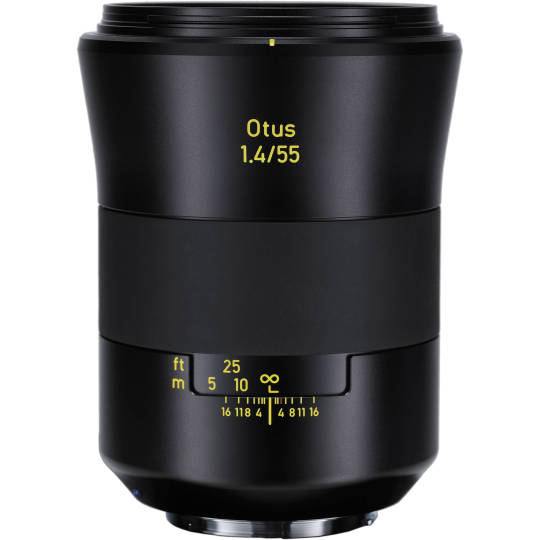
This $4000 lens is one of the sharpest and most optically perfect lenses ever created. This chonky boy has about 2 pounds worth of metal and glass.
It is capable of resolving about 30 megapixels worth of detail. Or roughly 6.5K.
Even on high end 60 megapixel mirrorless cameras, you're still going to be bottlenecked by the sharpness of the lens. Having some overhead on the sensor is good, but you are still only going to get 30 megapixels of detail under ideal conditions.
People never think about the lens. They always think about the sensor. There are phones with 100 megapixel sensors and that is mostly marketing. They usually output 12 megapixel images by default. You have to manually change it to 100 megapixel mode and the difference in detail is marginal at best.
Again, the best lens in the world needs 2 pounds of glass to reach 30 megapixels
Compare that to these dinky plastic lenses.

I'd say they are about 1.9999 pounds short.
Smartphones probably output a 6-8 megapixel image and I don't see that changing without breaking the laws of physics. AI and computational photography may be able to upscale them eventually. But right now it just makes them look oversharpened with ugly artifacts.
This also shows how stupid 8K video is. It is going to be such a waste of bandwidth when they start streaming in 8K.
Thankfully, we have reached the limit of what our eyes can perceive. We don't actually need any more pixels or Ks. High megapixel photos are really only fun for zooming way in or making gigantic prints.
I just wish we could move away from megapixel marketing and focus on aspects of image quality that will make a difference.
Color accuracy.
Color gamut.
Brightness.
Contrast.
Low light performance.
Noise.
77 notes
·
View notes
Note
I am this 🤏 close to buying my first camera, although still in the research phase. Any words of wisdom?
A lot of advice will depend on your budget really tbh but
Get full frame compatible lenses (assuming you're buying a crop sensor camera) so if/when you upgrade down the road you don't have to get new lenses
Don't stress too much on getting the bestest camera ever. A lot of people get waaay too engrossed with specs and pixel peeping while the sun is setting over them in a beautiful fashion (Ken Rockwell has a really good article about this haha).
Check marketplace/craigslist for camera gear too and always haggle. I saved $150 by haggling for my recent lens purchases.
Get a nice comfy neck strap, the default Nikon ones are thin and dig into you. I love my Langly strap but there's a billion different options out there
While I also recommend not getting to engrossed with specs/minor details still do learn about what your camera can do and what features it may or may not have. One of the things that solidified my decision for D850 is the built in focus stacking feature. I have no patience for doing that manually (imagine taking 90+ photos and you have to focus a little more closely each time, gah I have huge respect for people who do it the hard way). If you're looking at something from the D3k or D5k line keep in mind they don't have built in autofocus and depend on it being built into the lens (some older but still great glass doesn't have this option).
21 notes
·
View notes
Text
Well, I once again tripped and fell into a prior hyperfixation. This time it was the often forgotten RPG, Megaman X: Command Mission. Mostly just about how neat the introductory cinematic is and also the bizarrely similar organization names in the English translation. And uhhhh whoops my hand slipped. Have a ficlet set just after the end of the tutorial area after that dramatic fall off a seaside cliff.
X awoke, silently and completely still, scanning the room and consolidating his fragmented memory cache up until the point of impact. Finding the room secure and occupied by a single non-combat reploid, he engaged his running lights and activity protocols, fans and gyros whirring to life as he sat up quickly and looked around as though for the first time. "Where am I? Who are you?"
The green and khaki reploid startled and swiveled its head around immediately, the rest of its body following suit in stages. He seemed harmless enough, with all of the indicators of a light-duty standard build and an updated transponder flagging him as maintenance staff. "Oh! You're awake. Welcome back, Mr. X. Well, I guess welcome for the first time to the Resistance HQ and welcome back to consciousness. You suffered some pretty serious damage there before we picked you up. I'm pretty sure I got you put back together correctly, though I must admit I've never worked on a system as old as yours. I sure am glad you include an instruction manual!"
X tightened his focus on the reploid's stance, assessing any signs of hostility or subtle signals to backup out of his own perception. There was nothing, no indication this was anything but a polite chat between allies. "The Resistance? Why would you-?" X started, servos in his wrist swiveling to shorten the delay between his fist clenching and converting to its buster configuration for a fight. The subroutine parsing the conversation for potential codewords and subterfuge flagged an inconsistency he had overlooked in his haste. "Right, no, Epsilon is the leader of the Rebellion. You said you're with the...?"
"The Resistance. We're resisting the occupation of Epsilon's forces after the coup he staged."
"Resistance, not Rebellion. Right. You all really could have picked a clearer name"
"We could be the Republicans? Since we support the world republic that Epsilon is trying to overthrow?"
"None of us are Irish enough to pull that off"
"...Sir?"
"Kids these days. Ancient history, don't mind me. Point is you aren't the ones building a super weapon to conquer the planet"
"Nope, no super weapons here. We're just an isolated island nation with minimal contact with the mainland. Which apparently makes this place a great location to buid a super weapon"
"Isolated is right. Getting here was certainly a hassle"
"Did they fly you out here in a bomber squadron? With reinforcements?"
"No, HQ used some low orbit platforms to deploy mobile teleporter platforms, which have since scuttled."
"So your ride here was one way only?"
"By design. We came here to put a stop to Epsilon's plans. Since we're dealing with a Maverick incident, this entire island is under quarantine. No one is leaving here without HQ's approval. We only get that after the Rebellion blockade is cleared and an investigation team confirms that there are no traces of the Maverick virus here."
"Wow, you all really take this stuff seriously. I thought so long as the mechaniloids and reploids working for Epsilon were taken down, everything would be fine."
"It's our job to be thorough. I've seen what happens when the Maverick virus escapes quarantine. Time and time and time and time and time and time again..."
"Hit your head a little harder than I thought, did you? You got stuck there, I think. That's a few too many times, isn't it?"
X stared, face pulled taut into an unreadable expression. It could be a grimace, if it weren't for every point of articulation being tensed into an uncanny imitation of neutrality. Small lights flickered in his head behind the lenses of his eyes, which were focused on a point some hundred meters behind the reploid speaking to him. The silence hung too long.
"...rrrrright. Um...I'm sure you're needed in the command room. Just follow the signs when you're ready, Mr. X."
#megaman x#megaman x command mission#fanfiction#ficlet#sorry but I enjoy X being deeply weird about his long life of combat both deliberately and instinctively#he'll crack a joke based on a dated reference and poke fun at the way history repeats itself#and also use that humor to cope with all his accumulated trauma and avoid contemplating his coping mechanisms#he's got twelve tabs open in a minimized window that are half memes and half field training manuals#meanwhile he's got trauma.exe running in the taskbar making the CPU go brrrrrrr
9 notes
·
View notes
Text

📖TIP: Framing Camera Shots - Close Up and POV
This week we’re getting up close and personal with our little LEGO friends… so close that your minifig can sneeze all over your lens. To take LEGO close-ups, you’re going to need a macro lens that has a very short minimum focusing distance. A super macro lens capable of macro photos of insects would be the one you’re looking for, not all macro lenses can get quite that close.
Overview
Wide Shot
Full and Medium Shots
>Close Up and POV Shot<
Medium Close Up

The Medium Close Up Shot frames your subject from the chest and up. Think of this as your standard minifig portrait. This shot is mainly to highlight the personality and emotions of your subject.
Close Up

The Close Up Shot is all about the head. Generally, we humans look at a person’s eyes first, so make sure you get the eyes in focus. I suggest using manual focus with a small aperture (the higher the number the smaller the aperture, so f8 and up).
Extreme Close Up

The Extreme Close Up frames the eyes or other details. In film, framing just the eyes gives the viewer a sense of the character’s inner emotions, it can also be an extreme close up of various accessories and builds.
Detail Shot
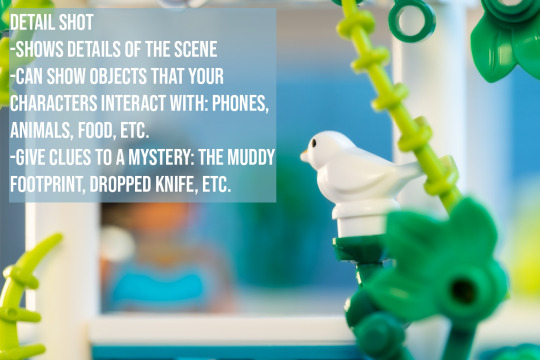
The Detail Shot is a variation of the extreme close up where we are focusing on an object or accessory. It is used to highlight a storytelling element in the scene that the viewer may not notice.
POV Shot

The purpose of a POV Shot is to make the viewer feel like they're part of the scene. One way to achieve this is to have a limb extending from the edge of the frame, as if the viewer's hand is interacting with the subject. In this example, I chose a dragon's POV, with his claws grasping the knight.
Over the Shoulder Shot

The Over-the-Shoulder Shot is another way to make the viewer feel like they're part of the scene. Shot from behind the shoulder of the observing character, it makes the viewer feel like they're standing just behind the observing character, looking at the subject.
There are many shots that I haven't been able to include due to how long this article is getting, but I hope this helps inspire you to create some great LEGO photography. Thanks for reading!
~@glowingbrickette
#brickcentral#lego photography#toy photography#brickcentral tips#tips#photography tips#framing#composition
50 notes
·
View notes
Text
Sony A7CII Thoughts After Two Months
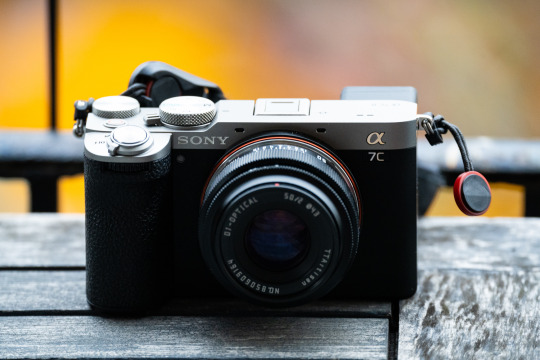
PROS:
The A7C was already one of my favorite cameras of all time and this improves on it a lot more than I thought when just seeing the specs. The added front dial alone makes it many times easier to control than the older model, and lets me use my typical Sony setup that I’ve grown accustomed to (aperture on front dial, shutter speed on rear dial, and ISO on the scroll wheel).
This is the quickest operating Sony camera I’ve owned. I think they kind of lulled me into forgetting how fast cameras can be going from off to on and taking photos. The A7RII was slow as heck with each subsequent model I’ve owned getting faster and faster (A7III to A7C to A7RIV). This new Sony is at a level of speed that makes it hard to go back to using the A7RIV which I still own (for now).
The autofocus is superb. I still haven’t really put it through its paces since I got the camera in the winter and the lack of light plus uncooperative weather has made it tricky to go out and shoot, but from what I have shot it’s nearly flawless. It’s way better than any camera I’ve owned before. It also has some really neat autofocusing modes, like the ability to focus on the eyes of birds. I’m not really around birds close up all that often but it worked really well at an exotic bird place in Jersey I went to recently.
The camera is 33 megapixels, which is a nice compromise between feeling like it’s sometimes too much (61) or too little (24).
The in-body image stabilization is really good. It’s certainly the best I’ve used in any camera so far…although to be fair I’ve never used a Nikon/Canon/Fuji/Olympus body with IBIS, only Ricoh (GRIII), Panasonic (GX7 and GX85), and Sony.
It can lower the shutter when switching lenses so dust doesn’t get in there. Not gonna lie it seems kind of dangerous and something that could potentially damage the shutter, but so far it’s kept the dust out.
CONS:
The viewfinder isn’t great. I’ve never really been an EVF snob since I’ve been shooting on mirrorless EVFs for over a decade now (I had a V1 back in 2013), but going from the A7RIV to this makes it kind of stick out. I also recently handled an A7RV, which really blows it out the water. With autofocus lenses it’s no problem, but using manual focus lenses is more difficult. On the plus side, it automatically goes into peaking mode when you manually focus, even when using adapted lenses or lenses without electrical contacts.
The camera only has one card slot. Not a huge dealbreaker considering every other camera I own aside from my A7RIV is the same in that regard. A second slot even if it was a micro would have been great though. A nice thing about the A7RIV is that I’ve never left home without a memory card because even if I forget one there’s always another in there.
No joystick. Again, not completely necessary but it’s nice to have. Most of my subjects aren’t humans (or animals, or other things that the camera can instinctively detect) so there are plenty of times I want to position the focus point myself.
Slow flash sync and shutter speed. This camera is like the A7C before it in that it only flash syncs up to 1/160. It also only shoots up to 1/4000.
Still don't love the flip screen because it makes quick waist-level shooting a pain in the ass. I wish they went with the A7RV style screen.
Speaking of, all the new perks on this camera make me want to use it a ton more than my A7RIV, but it also makes me want to get an A7RV. Maybe I'll sell my X100V since the prices are nuts right now...
SAMPLE PHOTOS:

Sony 85mm f/1.8 | ISO: 250, f/2.8, 1/125 sec

Sony Zeiss 55mm f/1.8 | ISO 100, f/1.8, 1/160 sec

Sony 85mm f/1.8 | ISO 5000, f/1.8, 1/50 sec

Tamron 20-40mm f/2.8 @ 20mm | ISO 3200, f/2.8, 1/125 sec

Sony Zeiss 55mm f/1.8 | ISO 100, f/2, 1/160 sec

Sony Zeiss 55mm f/1.8 | ISO 12800, f/2, 1/50 sec

Sony Zeiss 55mm f/1.8 | ISO 100, f/2.2, 1/640 sec
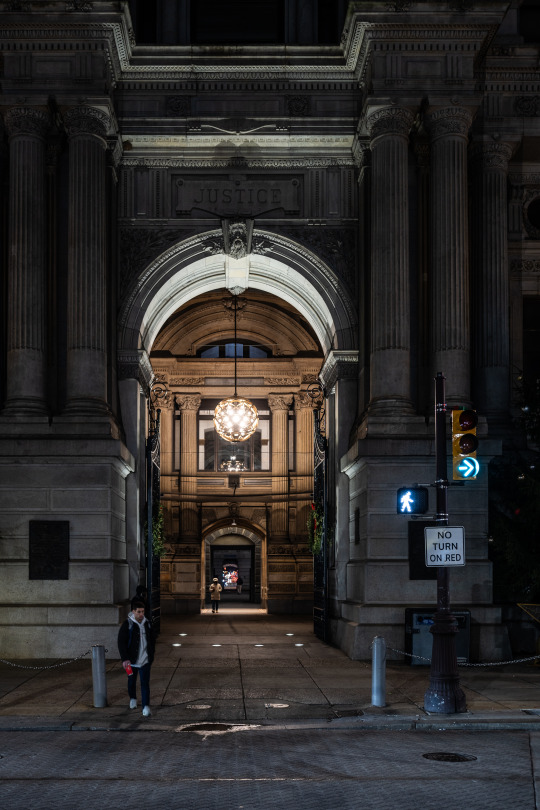
Tamron 20-40mm f/2.8 @ 32mm | ISO 320, f/2.8, 1/20 sec

Sony Zeiss 55mm f/1.8 | ISO 100, f/1.8, 1/500 sec

Tamron 20-40mm f/2.8 @ 37mm | ISO 800, f/2.8, 1/40 sec
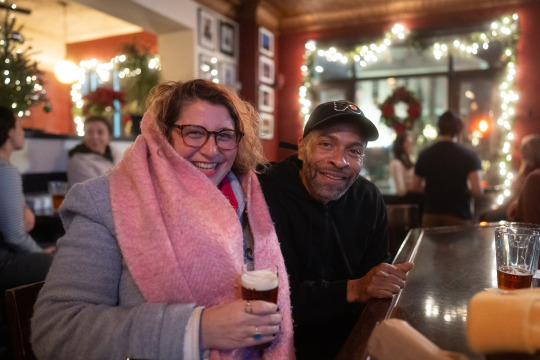
Sony 24mm f/1.4 GM w/ K&F Concept Black Diffusion 1/4 Filter | ISO 8000, f/1.4, 1/50 sec
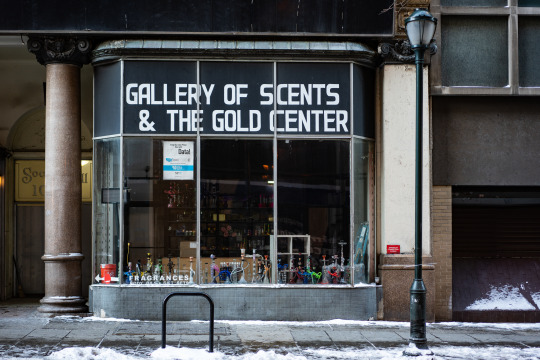
Sony Zeiss 55mm f/1.8 | ISO 250, f/1.8, 1/125 sec

Sony Zeiss 55mm f/1.8 | ISO 250, f/2, 1/125 sec
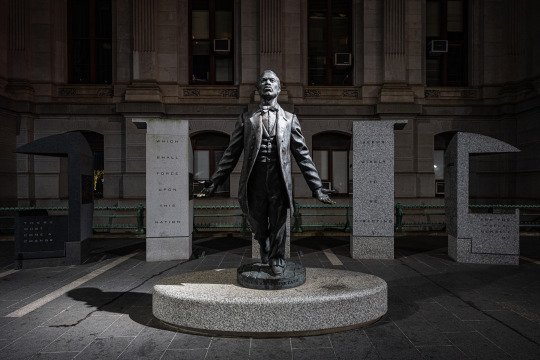
Tamron 20-40mm f/2.8 @ 20mm | ISO 400, f/2.8, 1/40 sec
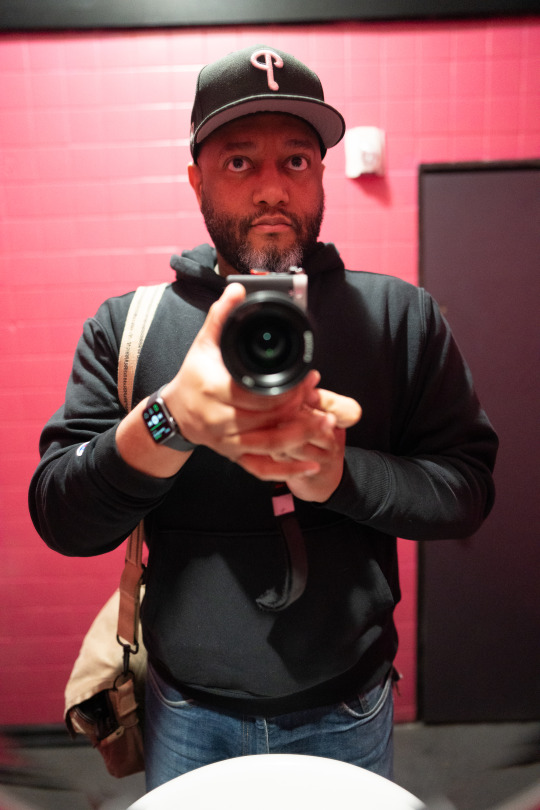
Sony 24mm f/1.4 GM | ISO 8000, f/1.6, 1/50 sec

Tamron 20-40mm f/2.8 @ 20mm | ISO 100, f/2.8, 1/320 sec
9 notes
·
View notes
Text
CineD: Irix 150mm T3.0 “Revamped” and Matte Box Announced – Commentary
CineD: Irix 150mm T3.0 “Revamped” and Matte Box Announced – Commentary

View On WordPress
#cinema lenses#Fujifilm#Fujifilm X-H2#Fujifilm X-H2S#Fujifilm X-mount lenses#Fujinon XF 18-120mm f/4.0 LM PZ WR#Irix#Irix 11mm T4.3 Cine lens#Irix 150mm T3.0 Macro Cine lens#Irix 15mm T2.6 Cine lens#Irix 30mm T1.5 Cine lens#Irix 45mm f/1.4 GFX lens#Irix 45mm T1.5 Cine lens#Irix cinema lenses#magnetic filters systems#manual focus lenses
0 notes
Text
Stop Down For Better Results. TTArtisan 50mm F2 Review
When patiently used, this inexpensive lens can produce really good images
It’s not quite a pancake lens, but the TTArtisan 50mm f2 lens is almost compact enough to be called one. A little bigger than an artisanal macaron, the lens doesn’t feel cheap in any way to hold. With a full metal body and clicked aperture ring, you’d be surprised to know that the lens retails for less than $80. But can it perform as well as it looks and feels?
(more…)

View On WordPress
#50 mm#50mm#50mm f2#50mm lens#aperture ring#cheap gear#Cheap Lens#cheap lenses#focus ring#Inexpensive#Inexpensive lens#lens#Manual Focus#Manual Focus Lens#manual lens#nikon z mount#Nikon Z mount lenses#street photography#TT Artisan#ttartisan#TTArtisan 50mm#Z Mount#Z mount lenses#zone focus
1 note
·
View note
Text
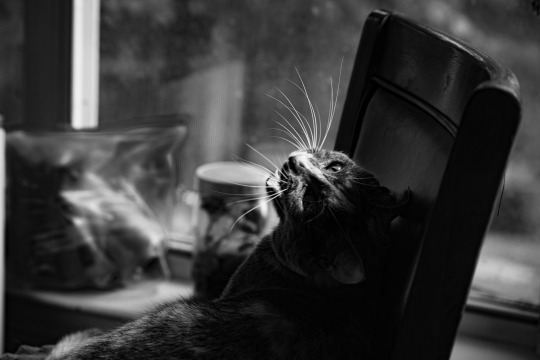
Baby
Sony a7rii, Nikon AF Nikkor 70-210mm 1.4 to 5.6 D
photo: T. Hall
#whatlightdoes#mine#my photography#sony a7rii#cat#cat photo#cat photography#my cat#baby#old lenses#manual focus
7 notes
·
View notes
Text
24 // help from above (extra credit)

“Lass…” A growl in her ear, urgency and anger losing some of their fidelity over the short-wave and through the scarf that covered half his face. Or maybe she was just enjoying him begging a little too much.
Each burst of light showed the scene in hazy shadows and streaks of red and orange—something the green cast of her scope hid while she peered through it. Dark splatter across the ground and against the walls of the site. A violent abstract art piece as she viewed it from her perch.
Her lenses focused through the haze, where a concrete wall was being reduced to gravel by the steady hammering of full-auto fire. A fuzzy black spec took refuge on the opposite side, still mostly intact. Her scope was pointed elsewhere, flickering crosshairs and spitting readouts. Directionals. Environmentals. Distance. Estimated falloff. Windspeed. More information than she needed in the moment while her target was lighting the place up like a strobe in a warehouse rave. Difficult for her tech to register any definite shapes through the constant flashing and low contrast. She cussed out her scope as she slid it off the rack.
“Lass?” another strained call for her to do something, and she hissed as she realized his cover was quickly disintegrating.
“Mmhm?” she answered back, searching for a figure through the muzzle flash. Manual focus. Wide aperture. Zoom maxed out. The limits of her optical specifications pushed. Newer tech could have overcome this storm easily.
“A li’l help from ‘bove wouldn’t go wrong.”
“Yep,” her own response was clipped.
A white flash from above lit the sky and, for the briefest of moments, the site fully was visible through the haze. Her target halfway behind cover, a glimpse all to brief. Thunder rolled overhead as she stood, putting the stock to her shoulder and bracing the stand against a sturdier surface.
“Say please,” she mumbled into her radio.
Another flash—white-blue skyfire casting a glow bright enough that she could see the bastard’s face. A prayer answered as she squeezed the trigger, and felt the whole of her perch shake with her thunder.
Nothing left but the howling wind, the dust-dark sky, and a staticky wheeze of relieved laughter.
“...Do I still gotta say please?”
#ffxivwrite2023#[ ffxivwrite2023 ]#[ cyberpunk ]#[ drabbles; sif ]#sunday is au day#sif gets to be good at things in AUs apparently
8 notes
·
View notes
Text
Well this thing got my neurons activated
youtube
A retrospective
During the winter of 2017, my path in college was underground a profound shift. In the midst of this shift I decided to take an intro to photography class. I always had an interest in photography so this became my first serious foray into the arts.
At the time I was quite new to photography, having only recently received my first ever interchangeable lens camera the past Christmas. I leveraged this new reality to help propel myself into the world of professional photography.
While enrolled in the class I had the opportunity to use a Nikon FG, a 35mm (full frame) film camera dating to the mid 1980s. The camera was one of two film cameras I used during my time in college, the other being a Pentax K1000. The camera came with a Micro-NIKKOR 55mm F2.8 lens (which apparently Nikon still makes???) and our choice of a couple rolls of Ilford 100 or 400 black and white film. I went with ISO 400 for the added low light performance.
Whenever I had the opportunity to check out one of the film cameras I always went for the Nikon because of its more pleasant and intuitive interface (to me at least). I would end up shooting At least four rolls of black and white film. It was pretty cool using such an old camera. Even the screw-in manual shutter cable had a vintage look and feel to it. I never had any issues with it.
Due to the fact I only had 36 shots per roll and couldn’t zoom, I had to choose and compose my shots carefully, and hope that everything was in focus and properly exposed when I hit the shutter button. I think for a beginner interested in photography it’s a good experience to have. The whole dynamic changes when you can zoom as you please, take as many shots as you want, and get immediate results on a screen.
Side note: Apparently film camera connoisseurs have a lot of gripes with this camera and I’m just like “yeah it gets the job done and looks and feels pretty”. I bet these same people would have a heart attack I chose it over the Pentax.

Back to the camera
The Nikon ZF camera is such a neat blending of an old Nikon film camera with cutting-edge mirrorless camera technology. You get the nostalgia of a metal camera body and brass dials with a digital flip-out screen, a full frame sensor with great high ISO performance, in-body image stabilization, 4K video at 30 fps, and advanced subject identification software driven by AI.
Is it practical? Depends who you ask… Cameras have come a long way and I don’t imagine the new Nikon ZF is any more pleasant to hold for long periods of time than the Nikon FG was (though they do make special add-on hand grips for them). The camera has no “auto” setting on the shutter speed dial, which funny enough the much older Nikon FG had. There’s no “auto” on any of the dials actually, making this logistically a pain to use. On my camera I have an ISO button that makes setting auto ISO quick and easy, so having to dig through the menu to do the same on this camera is a hard sell personally.
But it does look pretty…

A bit about my own setup
I’m quite content with my own cameras. I have two: an older APS-C camera and a newer full frame camera. They’re the best cameras I’ve ever handled, each with lenses that are the best I’ve ever shot with.
That being said, I do have two vintage lenses I picked up from a vintage goods store for a great price. One is a prime lens and the other is a pump-action zoom lens. I can’t wait to try them out on my newest camera one of these days. To get an idea of how they really perform. There is a certain nostalgic charm in that. A compromise between the digital age and the analogue age, for regularly shooting in film is just too heckin’ expensive!
5 notes
·
View notes